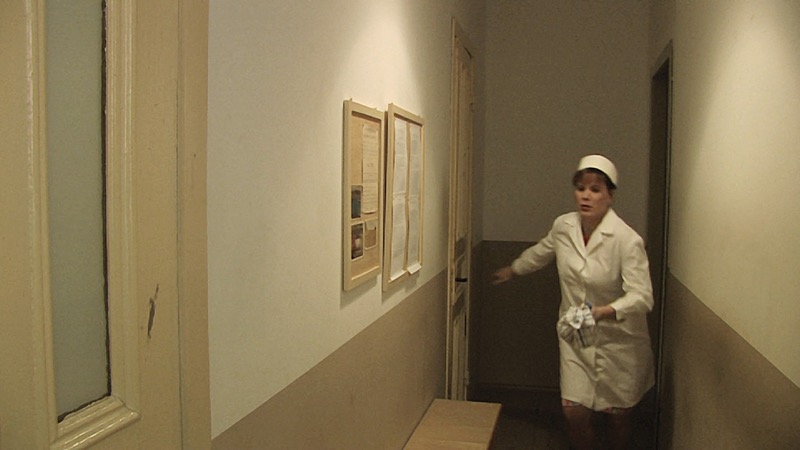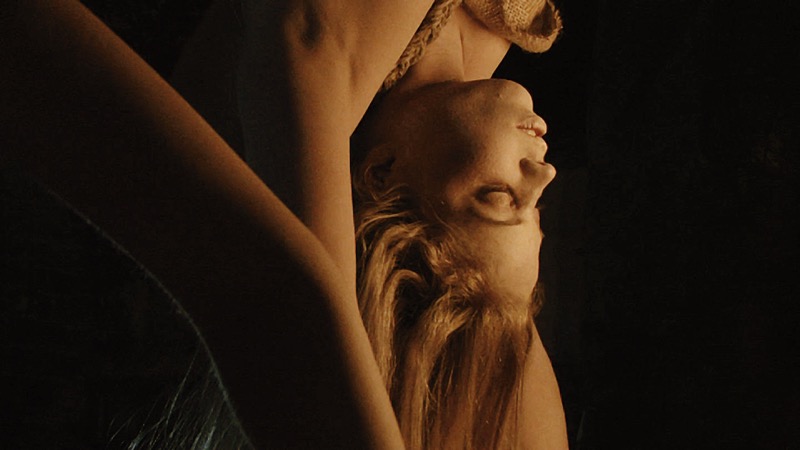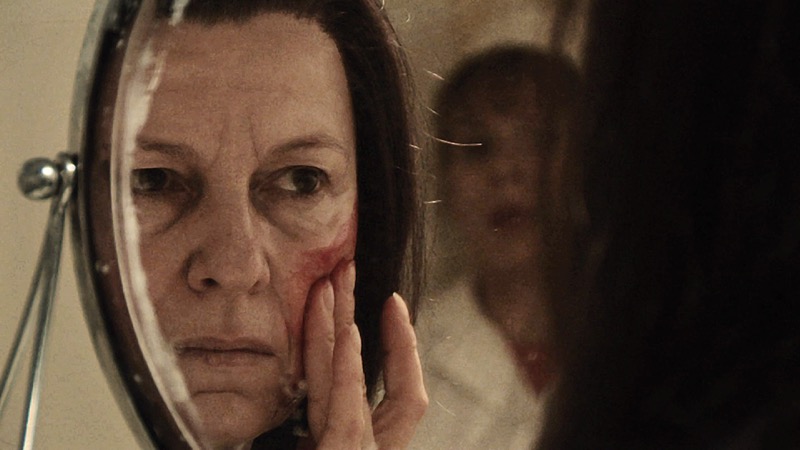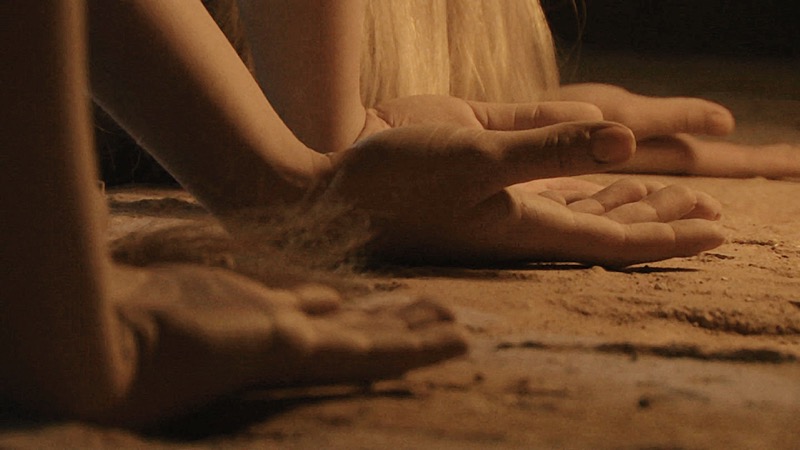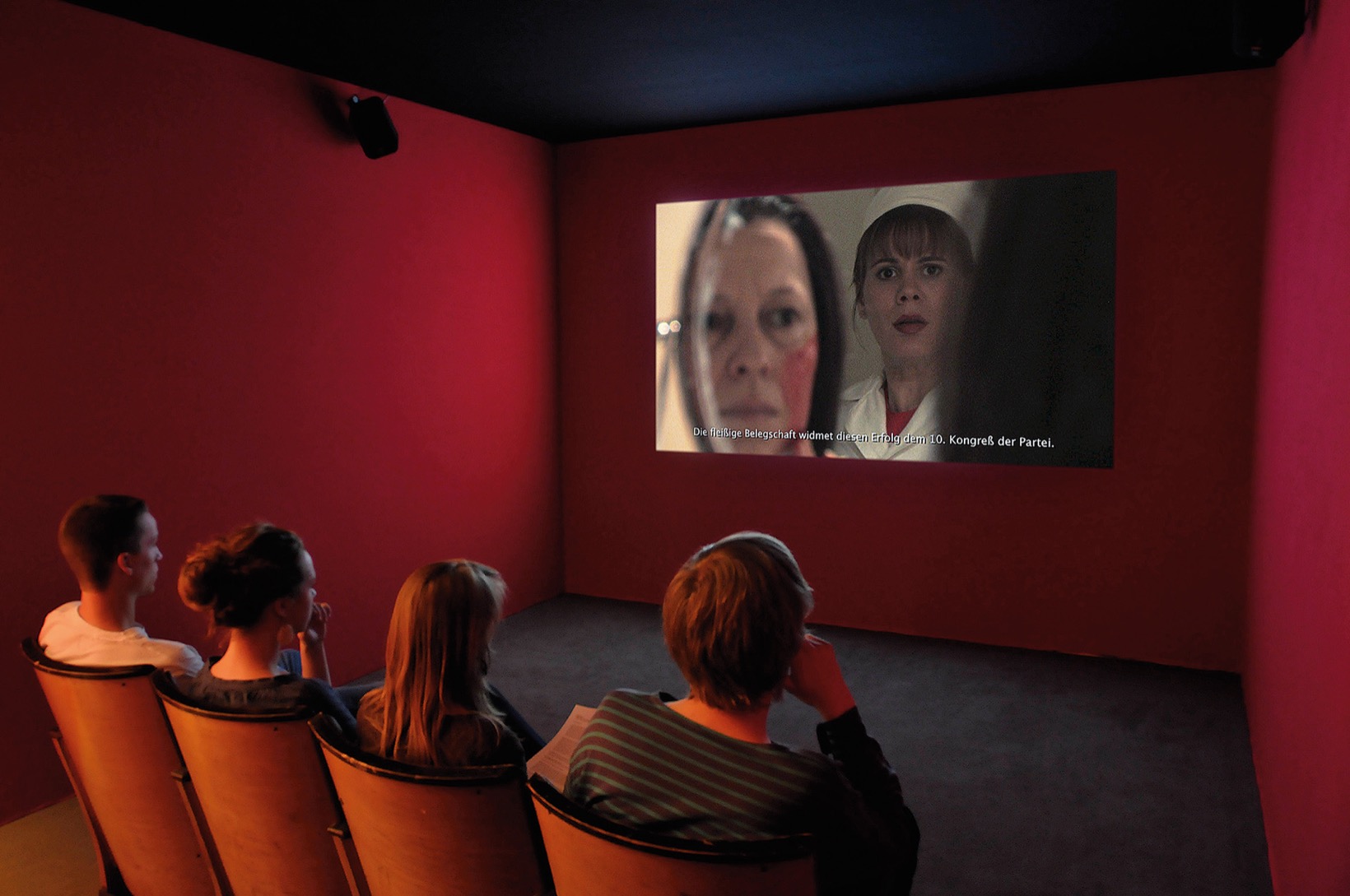
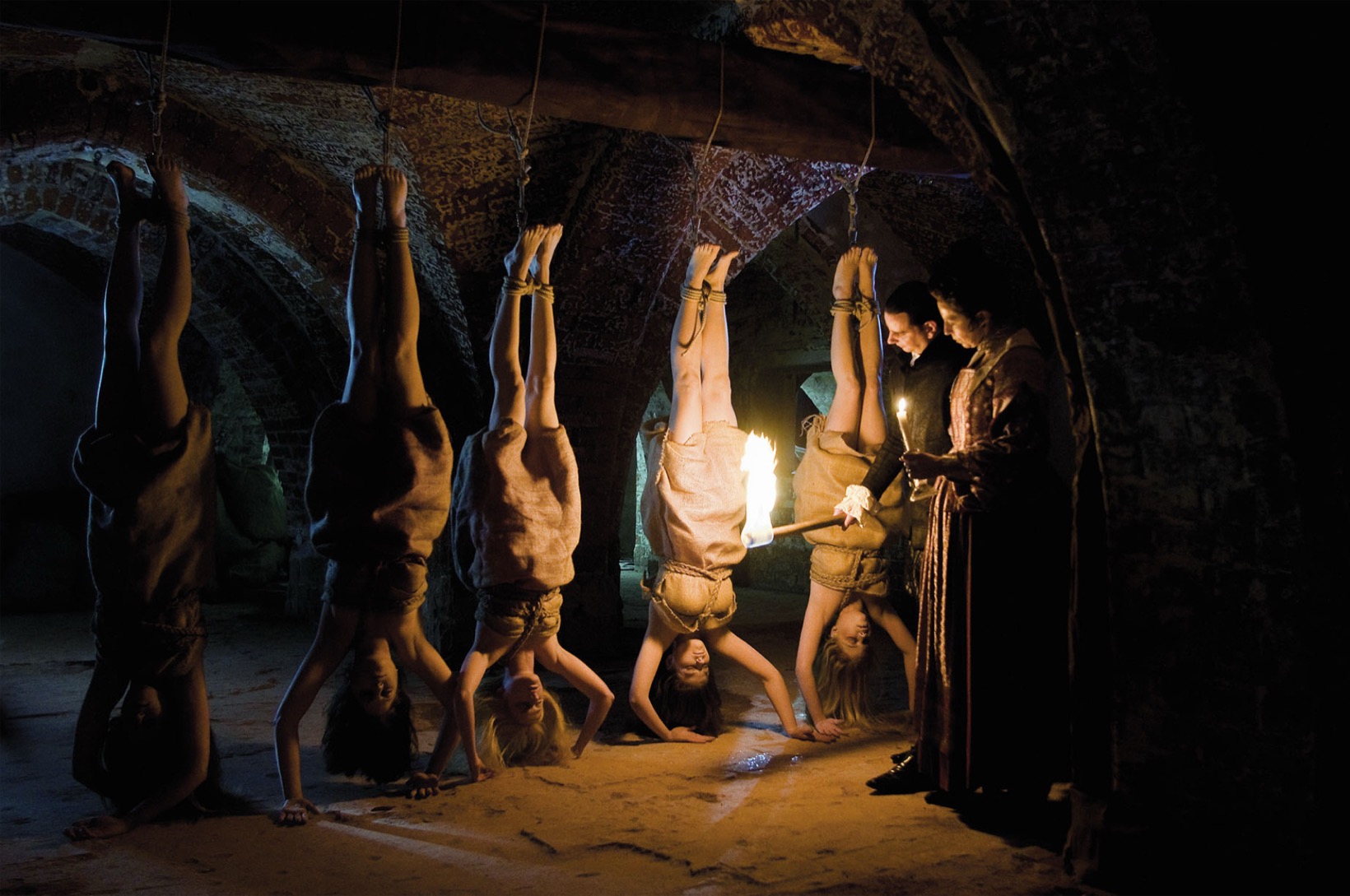
Red Cinema
Video installation HD, 6 min. 58 sec., loop, 16:9 / Language: Romanian with English or German subtitles
Cinematograful Roşu / Rotes Kino / Red Cinema
In Red Cinema (2009), Aurelia Mihai interlaces history and Hollywood cinema in a similarly artful way. The film begins with a scene from the horror film genre: five female corpses are hanging upside down in a vaulted cellar; a couple wearing historical costumes examines the scene with perverse, sadistic pleasure. The Marquis de Sade is not far away, but even closer is Bram Stoker’s Romanian-Transylvanian horror protagonist Count Dracula with his female mass-murderer counterpart Countess Elisabeth Báthory. When the woman, alias Elisabeth, dabs blood that has dripped down from the corpses onto her face, the film cuts to a psychiatric sanatorium in which a female patient also smears blood on her face. Thus we jump through film history from Dracula to Roman Polanski’s Rosemary’s Baby, to which Aurelia Mihai makes explicit reference: in the background one can hear radio news from 1969, which one can infer from reports on the moon landing and the murder of Sharon Tate (Polanski’s wife and the leading actress in Dance of the Vampires). The cinematic horror is suddenly overlaid with a true incident and ultimately ties in with contemporary political history, which is communicated via the radio in the form of the Romanian dictatorship. The cinematic, fictional horror shifts into an image of everyday life in the Romanian dictatorship, and vice versa: depending on where one enters the ongoing story in the loop, it is be- ing told either chronologically or as a flashback. Aurelia Mihai once again critically approaches her own national history in a multilayered penetration of art, film, and contemporary history.
